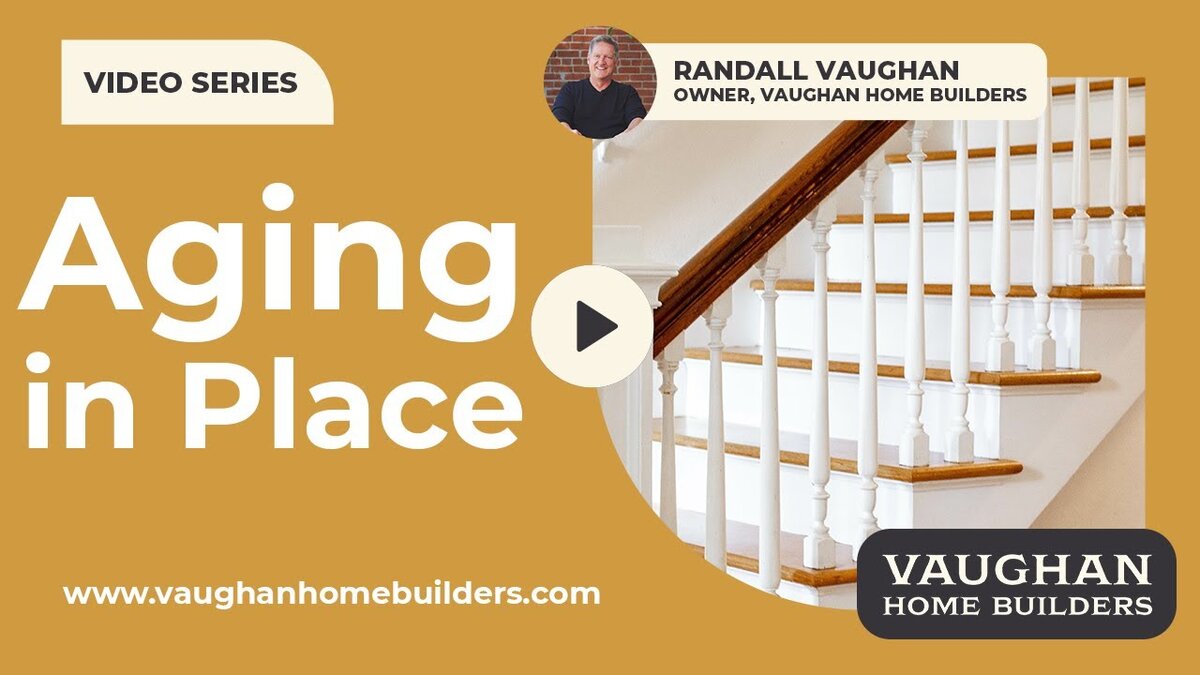Comfort and independence become top priorities as we plan for the future. To design a home for aging in place means creating a space that supports changing needs without sacrificing style or functionality. From safer bathrooms to smart layouts and accessible features, the right design choices can make it easier to live well at home now and in the years ahead.
The Importance of Single-Level Living
One of the most critical aspects of designing a home for aging in place is eliminating stairs. Climbing stairs daily can become a major challenge, especially for those with mobility issues or joint pain.
- Ranch-Style Homes: Single-story layouts eliminate the need to climb stairs, making it easier to move around the house.
- Basement Considerations: Homes with basements should include stairlifts or alternative access points to reduce strain.
- Wide Hallways and Open Spaces: Providing more room to maneuver makes the home safer and more comfortable for residents using walkers or wheelchairs.
Enhancing Accessibility with Wider Doorways
Standard doors are typically 28 to 30 inches wide, which may not be enough for those using mobility aids. Increasing door widths to 36 inches allows for easier movement between rooms and prevents accessibility challenges in the future.
Bathroom Modifications: Safety and Convenience
Bathrooms can be hazardous, but with a few smart design choices, they can be made safer and more functional:
- Curbless Showers: Traditional showers have a raised edge that can be difficult to step over. A curbless, zero-threshold shower allows seamless access, which is especially beneficial for those with mobility challenges or using wheelchairs.
- Grab Bars: Installing grab bars near toilets and showers provides extra stability and reduces the risk of falls.
- Comfort-Height Toilets: Instead of standard low toilets, opting for taller toilets (around 18 inches) makes sitting and standing easier, particularly for those with knee or hip issues.
- Lower Vanity Heights: Standard vanities may be too high for seated users. Lowering cabinet heights ensures accessibility for all.
Future-Proofing a Home
Aging in place isn’t just about making adjustments for the present—it’s about preparing for future needs.
- Smart Home Technology: Features such as smart lighting, voice-activated assistants, and automated thermostats make home management effortless.
- Wireless Systems: Modern homes rely on wireless connectivity for security, lighting, and entertainment, reducing the need for extensive wiring.
- Security Features: Video doorbells and motion sensors provide added peace of mind for homeowners.
Kitchen Design: Functionality and Accessibility
The kitchen is a central hub of any home, and it should be designed for both convenience and safety:
- Adjustable Counter Heights: Offering counters at different levels accommodates both standing and seated users.
- Pull-Out Shelving: Reduces the need to reach deep into cabinets, preventing strain or injury.
- Lever-Style Faucets: Easier to operate than traditional knobs, making them ideal for individuals with arthritis.
- Non-Slip Flooring: Helps prevent slips and falls, which are common in kitchen areas.
Flooring Choices: Reducing Trip Hazards
Choosing the right flooring materials is essential to minimizing fall risks:
- Non-Slip Surfaces: Cork, rubber, or textured tile provide stability and reduce slipping hazards.
- Low-Pile Carpeting: A good alternative to slippery flooring, as it offers traction and cushioning in case of falls.
- Seamless Transitions: Ensuring level flooring throughout the home eliminates tripping points.
Lighting: Enhancing Visibility
Good lighting is essential for safety and ease of use:
- Ambient Lighting: Prevents glare and ensures even illumination throughout the home.
- Task Lighting: Brightens specific areas such as kitchen counters, reading nooks, or workspaces.
- Night Lights: Placed in hallways and bathrooms, they help guide movement at night.
Outdoor Considerations: Safe Entry and Egress
The exterior of the home should be just as accessible as the interior:
- No-Step Entries: Eliminating steps at entrances ensures easy access for everyone.
- Ramps: Where steps cannot be avoided, ramps provide a safer alternative.
- Even Walkways: Well-maintained, well-lit pathways reduce the risk of tripping.
In Summary
When planning to design a home for aging in place, it’s essential to consider long-term safety, accessibility, and convenience. By incorporating wider doorways, curbless showers, smart home features, and slip-resistant flooring, we can create a home that adapts to our needs over time.
At Vaughan Home Builders, we specialize in helping homeowners design a home for aging in place with the right features to ensure comfort and independence. If you’re considering building or renovating for long-term accessibility, contact us today to see how we can bring your vision to life.


